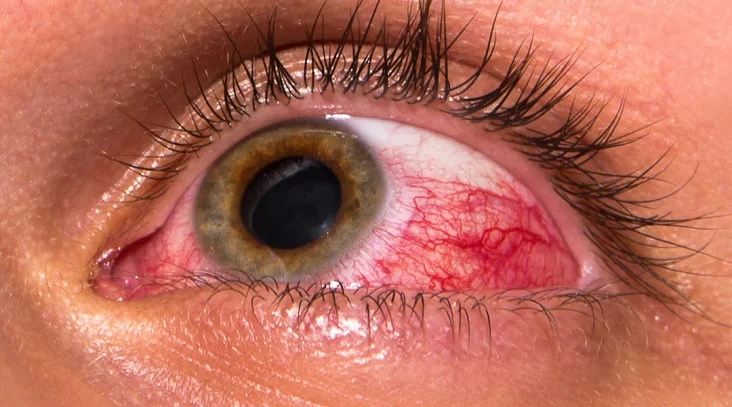Dry eye disease affects the layers of tears that cover the cornea. It occurs when you do not have enough tears or when they vanish too rapidly. Symptoms include burning, itching, and a gritty sensation in your eye. You may need to attempt a variety of therapies, such as eye drops and procedures, before finding a solution that works for you.
What is dry eye?
Dry eye is a disorder that affects your tear film, which consists of three layers of tears that cover and protect the surface of your eyes. To see clearly and comfortably, you’ll need a smooth, solid tear film. Burning, stinging, wetness, and blurred vision are all possible symptoms of tear film disruption.
Many causes can hinder your tear film from operating properly, resulting in dry eye. That is why healthcare experts classify dry eye as a multifactorial condition. The causes and risk factors are varied and complicated. As a result, it may take some time to identify the source of the problem and determine what is causing your symptoms. If you have dry eyes, you should consult an ophthalmologist or optometrist to manage your problem.
Types of dry eye disease
You might think that dry eye illness simply implies that your eyes do not produce enough tears. That’s only part of the story. There are different types of dry eye illness.
- Aqueous deficient dry eye: This occurs when your eyes do not generate enough tears. The lacrimal gland (located in the top, outer corner of each eye) produces aqueous tears. These tears form the middle, watery layer of your tear film. Your lacrimal gland may become inflamed as a result of certain autoimmune illnesses, which will hinder it from producing enough aqueous tears.
- Evaporative dry eye: This occurs when your tears vanish too soon. The most prevalent cause is meibomian gland dysfunction. This is a symptom that something is wrong with the glands in your eyelids that create the greasy, outer layer of tear film. As a result, the oily layer is unstable and cannot prevent the watery layer from drying out.
- Mixed dry eye: Certain individuals suffer from aqueous tear insufficiency and tear instability. This suggests your eyes aren’t producing enough tears, and your tear film is fragile. Both of these conditions cause dry eye symptoms.
How common is dry eye disease?
Dry eye illness is prevalent. The prevalence of dry eye in our study is 32%, according to the OSDI questionnaire. The prevalence of DED in India is higher than the global average, ranging from 18.4% to 54.3%. Tens of millions of individuals throughout the world suffer from dry eye. It is more common in Asia than in North America and Europe. It’s also more common among postmenopausal women.
What can dry eye be a sign of?
Dry eyes can arise on their own or in combination with other medical disorders. Dry eye can indicate:
- Sjögren’s syndrome affects around 10% of persons with aqueous deficient dry eyes.
- Diabetes (If you have diabetes, you have a 50/50 chance of developing dry eye as a consequence).
- Thyroid eye disease.
- Blepharitis.
Symptoms and Causes
What are the symptoms of dry eye?
When you have dry eyes, you may feel as if something is trapped in your eye and refuses to leave. This can cause a scratchy, gritty, or sandy sensation. Symptoms may include:
- Burning or stinging.
- Feeling sensitive to light.
- Blurred or changed vision.
- Mucus that comes out of your eye.
- Watery eyes, with tears streaming down your cheeks.
The watery eyes symptom may appear perplexing. However, it is a common feature of dry eye. It occurs when your meibomian glands do not produce sufficient oils for the outer layer of your tear film. So your tear film’s middle, watery layer evaporates too soon. To compensate, your lacrimal glands produce more watery tears. However, these tears cannot properly coat your eye like the oily coating would. As a result, they are unable to resolve the root cause of the issue.
What causes dry eye?
Dry eye happens when:
- Your eyes don’t produce enough tears.
- Your tears evaporate too quickly.
- Both of these happen together.
Many factors can increase your chances of developing a dry eye disease or experiencing symptoms that worsen over time.
Dry eye illness can have far-reaching consequences beyond your eyes’ comfort. It may impair your capacity to work, socialise, and enjoy life. Dry eyes can have a negative impact on your emotions and mental health. You may feel secluded, yet you are not alone. Connect with people who have this illness and share your stories. It requires patience and perseverance, but there is hope for relief.
If your current therapies aren’t working, don’t hesitate to contact your provider. Tell them how you’re feeling and inquire about various treatments available to control your disease and improve your quality of life.

